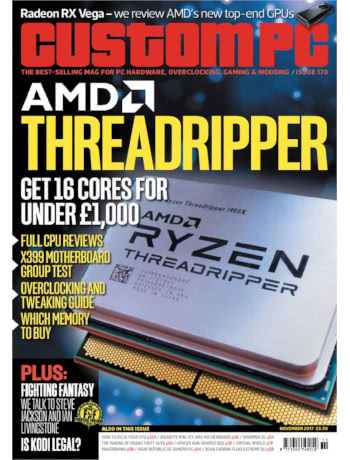 This month’s Hobby Tech column has a particular focus on do-it-yourself handheld gaming, looking at two Arduino-compatible yet totally different kits: the Creoqode 2048 and the MAKERbuino. As an added bonus, there’s also a review of a set of Arlent-brand soldering iron tips coupled with a lesson on just why keeping your tips in tip-top condition is so very important.
This month’s Hobby Tech column has a particular focus on do-it-yourself handheld gaming, looking at two Arduino-compatible yet totally different kits: the Creoqode 2048 and the MAKERbuino. As an added bonus, there’s also a review of a set of Arlent-brand soldering iron tips coupled with a lesson on just why keeping your tips in tip-top condition is so very important.
First, the Creoqode 2048. Initially produced following a successful crowdfunding campaign, London-based Creoqode has since improved and expanded the original 2048 design. Built around a hefty 64×32 RGB LED matrix display, the laser-cut chassis is eye-catching but not pocket friendly in any sense of the word: the entire unit is the largest handheld I’ve seen since the 1980s and you won’t get change from £200 once you’ve added shipping to the sky-high £189 asking price.
If Creoqode had done a better job of putting the kit together, that pricing could be overlooked. Sadly, the design is a mishmash of off-the-shelf parts – including a Mega2560 Pro Mini microcontroller, entirely unmodified save a cheeky change to the silkscreen to plaster the Creoqode logo where it most definitely does not belong – with some of the most awkward wiring imaginable. Worse still, the solder-free assembly turns out to be misleading: the use of too-thin cables in the battery holder means you’ll need to whip out a soldering iron and effect your own repairs if you want your console to do anything other than reset itself after a few minutes of use.
The MAKERbuino, by contrast, couldn’t be more different. Created as a soldering kit variant of the open-hardware Gamebuino, reviewed back in Issue 134, the MAKERbuino is a fraction of the price but infinitely more usable. Like the Gamebuino, the MAKERbuino loads its games from a bundled SD Card – whereas the 2048 is limited to a single ‘game’ (in reality incredibly basic demonstration of its capabilities, provided for some reason as Microsoft Word documents rather than INO files) which can only be swapped out by connecting it to a computer. The MAKERbuino also benefits from the incredible Gamebuino community, built up over the years since its launch, with dozens of available games and a great quality framework for building your own.
The Arlent-brand soldering iron tip review came about as I was preparing to build the MAKERbuino kit and spotted that the tip on my soldering station was somewhat past its prime. If you’ve ever found your soldering skills appearing to worsen, rather than improve, over time, then you’re probably the victim of an ageing tip. At less than a tenner for ten tips of varying shape and size from supplier Persder, they were definitely worth a shot – and I’m pleased to say have been performing admirably since.
All this, and the usual raft of interesting stuff written by other people, can be found at your nearest supermarket, newsagent, or digitally via Zinio and similar services.


 This month’s Custom PC magazine has a bumper crop for fans of Hobby Tech: a four-page shoot-out of do-it-yourself handheld games consoles on top of my usual five-page column, which this time around looks at setting up
This month’s Custom PC magazine has a bumper crop for fans of Hobby Tech: a four-page shoot-out of do-it-yourself handheld games consoles on top of my usual five-page column, which this time around looks at setting up  This month’s issue of PC Pro includes a four-way Battle Royale of DIY handheld games consoles, starting with the
This month’s issue of PC Pro includes a four-way Battle Royale of DIY handheld games consoles, starting with the  This month’s Hobby Tech column has a particular focus on do-it-yourself handheld gaming, looking at two Arduino-compatible yet totally different kits: the
This month’s Hobby Tech column has a particular focus on do-it-yourself handheld gaming, looking at two Arduino-compatible yet totally different kits: the